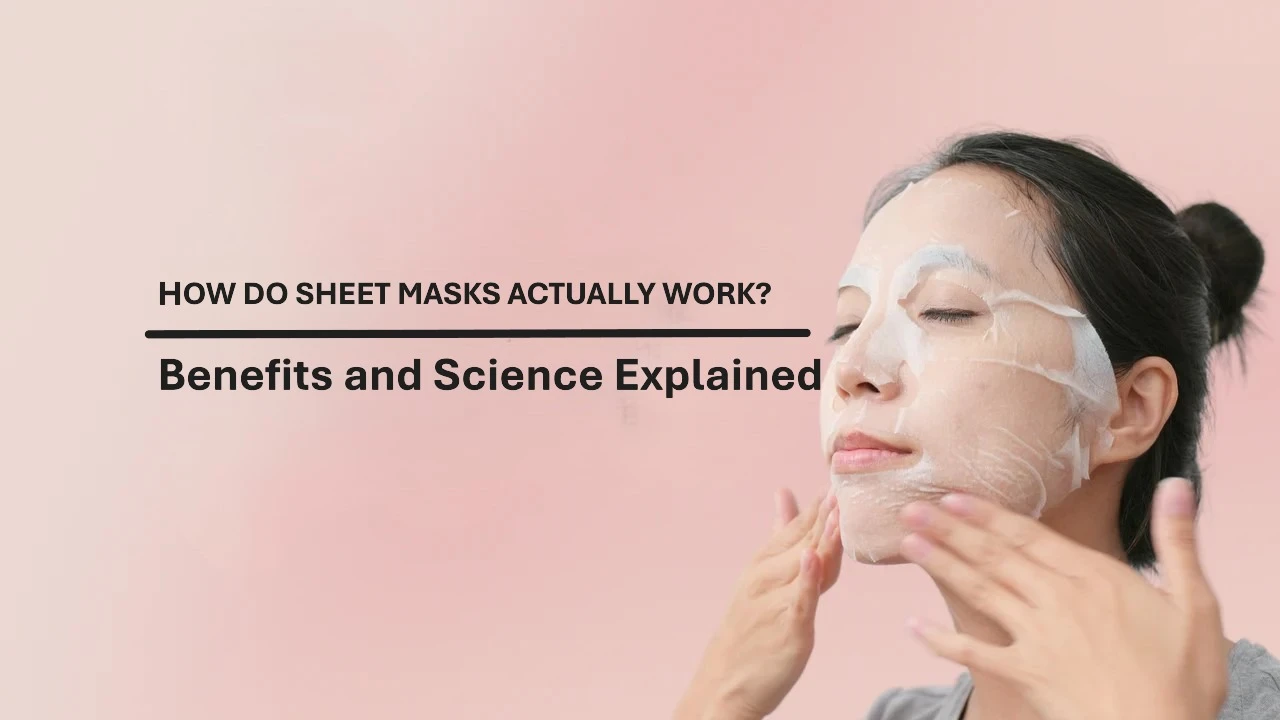How Do Sheet Masks Actually Work? Benefits and Science Explained
How Do Sheet Masks Actually Work?
Sheet masks have become a popular staple in skincare routines across the globe, thanks to their convenience and quick, visible results. But beyond the trend and packaging, how do sheet masks actually work? The answer lies in their unique design and how they deliver active ingredients deep into your skin.
What Is a Sheet Mask?
A sheet mask is a face-shaped piece of fabric, hydrogel, or bio-cellulose that is soaked in a nutrient-rich serum or essence. The sheet is applied directly to clean skin and left on for about 15–20 minutes, allowing the ingredients to absorb.
Sheet masks are designed to create a barrier over the skin, locking in hydration and helping ingredients penetrate more effectively. They’re usually single-use, making them a quick and targeted treatment option.
How They Work: The Science Behind Sheet Masks
1. Occlusion Boosts Absorption
The key principle behind sheet masks is occlusion. When the mask covers your face, it prevents evaporation of the serum. This trapped moisture creates a moist environment that softens the skin’s outer layer, increasing its permeability. As a result, your skin absorbs more of the active ingredients than it would if you simply applied a serum alone.
2. Prolonged Contact Time
Unlike regular creams or serums that might evaporate quickly, sheet masks stay in contact with your skin for a longer period. This allows the ingredients more time to penetrate the deeper layers of the skin, delivering maximum hydration and nourishment.
3. Tailored Ingredients for Specific Concerns
Sheet masks are often formulated to target specific skin concerns, such as:
-
Hydration – With ingredients like hyaluronic acid or aloe vera.
-
Brightening – With Vitamin C, niacinamide, or pearl extract.
-
Anti-aging – With peptides, collagen, or retinol.
-
Soothing – With green tea, chamomile, or centella asiatica.
The fabric serves as a delivery system that holds these ingredients close to the skin, ensuring optimal absorption.
Types of Sheet Mask Materials
-
Cotton or Microfiber: Affordable and breathable but may dry out faster.
-
Hydrogel: Gel-like material that fits snugly and stays moist longer.
-
Bio-cellulose: Made from fermented coconut juice; adheres closely and is very effective at delivering actives.
Each type affects how well the ingredients are delivered and how the mask feels during use.
When and How to Use Them
Sheet masks can be used 1–3 times per week or whenever your skin needs a boost. For best results:
-
Cleanse and tone your skin.
-
Apply the sheet mask and leave it on for the recommended time.
-
Gently pat in the remaining serum—no need to rinse.
-
Follow up with a moisturizer to seal everything in.
Conclusion
Sheet masks work by creating a moisture-locking barrier that helps your skin absorb active ingredients more effectively. With targeted formulations for various skin issues and a simple application process, sheet masks are a powerful addition to any skincare routine. They’re not just a trend—they’re a scientific approach to deeply hydrating and treating your skin in just minutes.

Related Blog
What Causes Oily Skin and Can It Be Managed Naturally? Exploring Root Causes and Gentle Solutions
Aug 2, 2025 by Admin
General
What Are the Signs That You Have Sensitive Skin? Key Symptoms to Help You Identify This Delicate Skin Type
Aug 1, 2025 by Admin
General